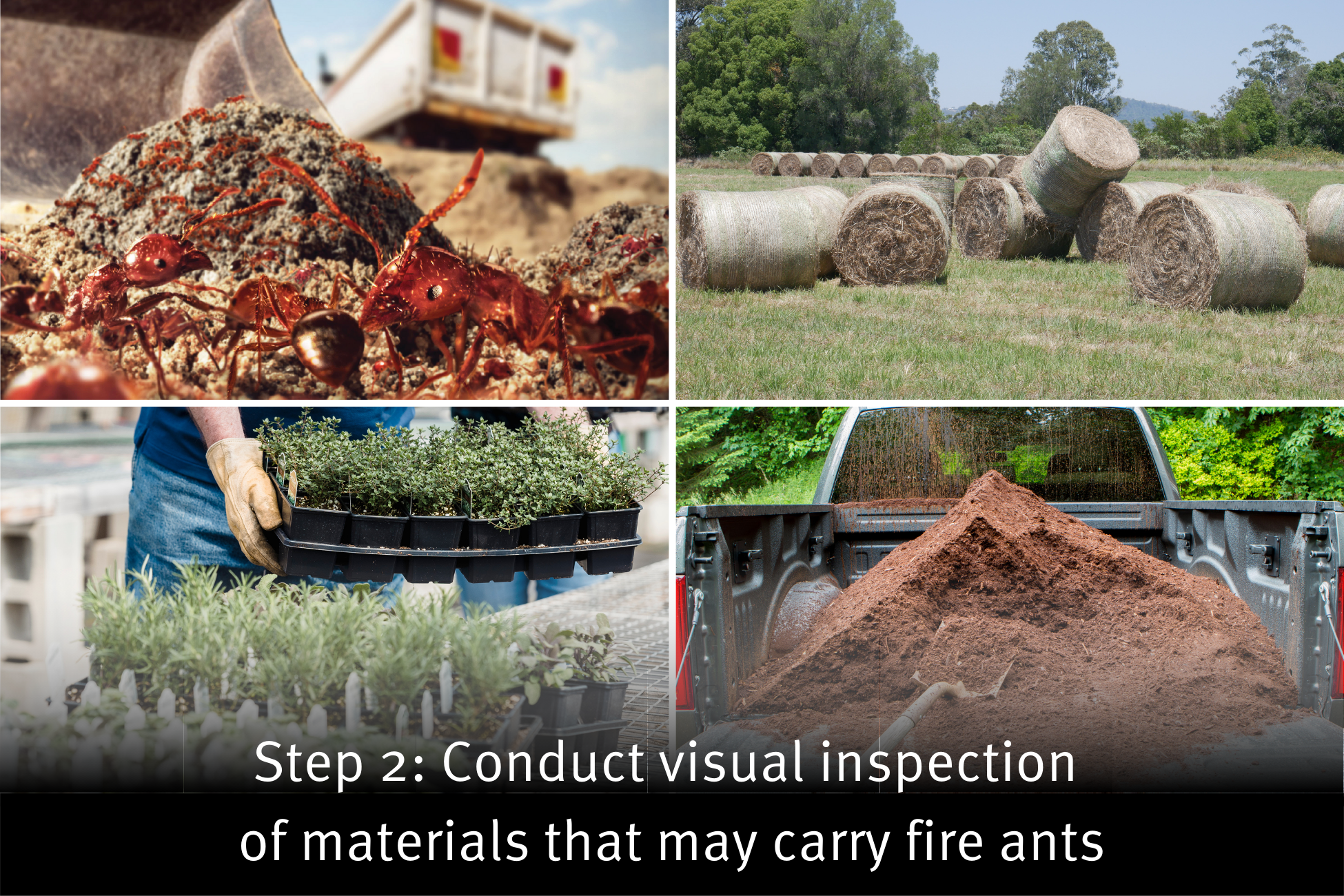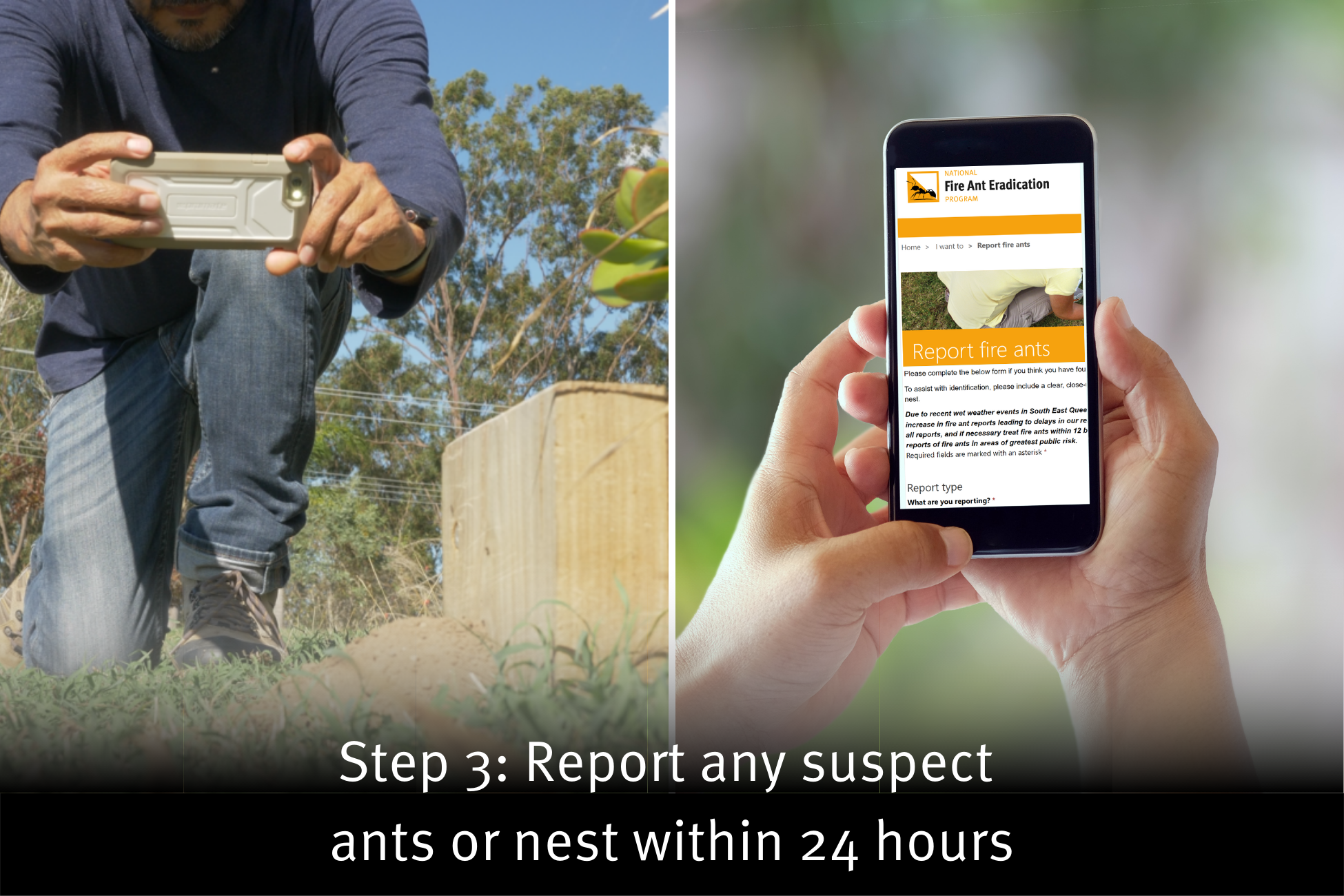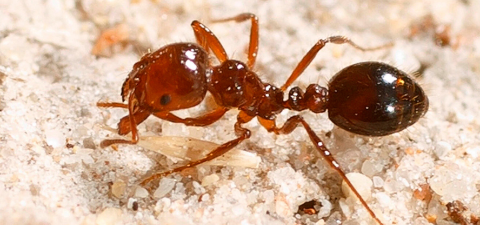High-risk fire ant detections receive priority sample collection, treatment and surveillance.
We respond to fire ant nests found beyond our containment boundary as quickly as possible. They are of high importance due to the risk they pose to national eradication efforts.
Find out more about:
- recent outlier detections
- our response to a detection
- what to do if there is a detection in your area.
Recent outlier detections
Queensland
- Caboolture
A community member found and reported multiple nests on a property on 16 April 2024. The nests have been destroyed using liquid insecticide and surveillance activities are underway.
- Oakey, Toowoomba
A community member found and reported multiple nests on a property on 16 April 2024. The nests have been destroyed using liquid insecticide and intensive surveillance activities are underway.
- Guji Mudlu (Coochiemudlo Island)
A vigilant community member found and reported a suspect ant nest on a private property on 3 April 2024. The nest has been destroyed and surveillance activities are now underway in the area.
- Currumbin Waters
A vigilant community member found and reported a suspect ant nest on a road verge in an industrial estate on 6 March 2024. The nest has been destroyed and surveillance activities are now underway in the area.
- Canaipa (Russell Island)
A vigilant member of the public found and reported 1 nest at a private property on 24 February 2024. The nest has been treated and surveillance activities are now underway in the area.
- Janguwajah (Macleay Island)
A vigilant member of the public found and reported 1 nest at a private residence on 8 February 2024. The nest has been treated and surveillance activities are now underway in the area.
New South Wales
- Wardell
- follow treatment or cleaning requirements specified for the organic material you wish to transport
- follow cleaning requirements for agricultural and earth moving equipment (including dump trucks and bins)
- complete a record of movement declaration form (unless moving clean or new agricultural machinery or earth moving equipment).
A member of the public discovered 1 fire ant nest in a temporary housing complex in Wardell, south of Ballina (NSW) on 19 January 2024. Further surveillance located 4 additional nests.
All known nests have been destroyed with a liquid insecticide. Our officers are conducting further treatment and surveillance.
Our officers are authorised under the Biosecurity Act 2015 (NSW) to treat any additional nests using fire ant bait approved by the Australian Pesticides and Veterinary Medicines Authority (APVMA).
Our officers will seek your consent to access your property.
An emergency biosecurity order is now in place in the Wardell area to stop fire ants from spreading further. The control area is a 5km radius from where the nests were found.
The biosecurity order restricts the movement of organic materials outside the 5km control area unless you:
View the map of fire ant infested areas of South East Queensland and Northern NSW to see if you're in the Fire Ant Movement Control Area.
- South Murwillumbah
Landscapers discovered 2 fire ant nests on a development site on 5 December 2023 while undertaking planned surveillance in the area. A further 3 nests have since been found.
All fire ant nests have been found and destroyed by direct nest injection.
While this detection is disappointing, fire ant detections outside the South East Queensland infestation area do occur and the National Fire Ant Eradication Program has procedures in place to deal with them.
An emergency biosecurity order is now in place in the Murwillumbah area to prevent fire ants from spreading further. The control area is a 5km radius from where the nests were found.
Learn more about the work we are doing in Murwillumbah and the emergency biosecurity order.
Our response to a detection
Our response will vary slightly depending on the location and number of nests, information provided by the reporter and the risk of spreading if the ants are fire ants.
Our typical response includes a combination of:
- site visit and sample collection — generally completed within 72 hours of the find. We'll complete genetic testing of the ants to ensure they are fire ants and investigate how they arrived at the site. This information is particularly important if we suspect human-assisted movement
- treatment of the nests and surrounding area — this will likely include a combination of direct nest injection and broadscale treatment using a granular product
- surveillance — our teams will check the immediate area and nearby ideal fire ant habitats to locate and destroy all nests
- communication and engagement — we'll notify residents and businesses located near the detection and ask them to:
- look for and report fire ants
- provide our teams with access to conduct eradication activities
- take steps not to spread fire ants.
This contact may be through electronic notifications, mailbox deliveries, digital advertising, phone calls or doorknocks.
What to do if there is a detection in your area
We may let you, your neighbours and local businesses know if fire ants are found in your suburb or a nearby location.
If you receive or see communication to this effect, or you are located within 5km of a detection of importance we ask you to:
- look for any suspect ants or nests — check your home, work and nearby public spaces
- conduct visual inspection of materials that may carry fire ants
- report any suspect ants or nests within 24 hours.








